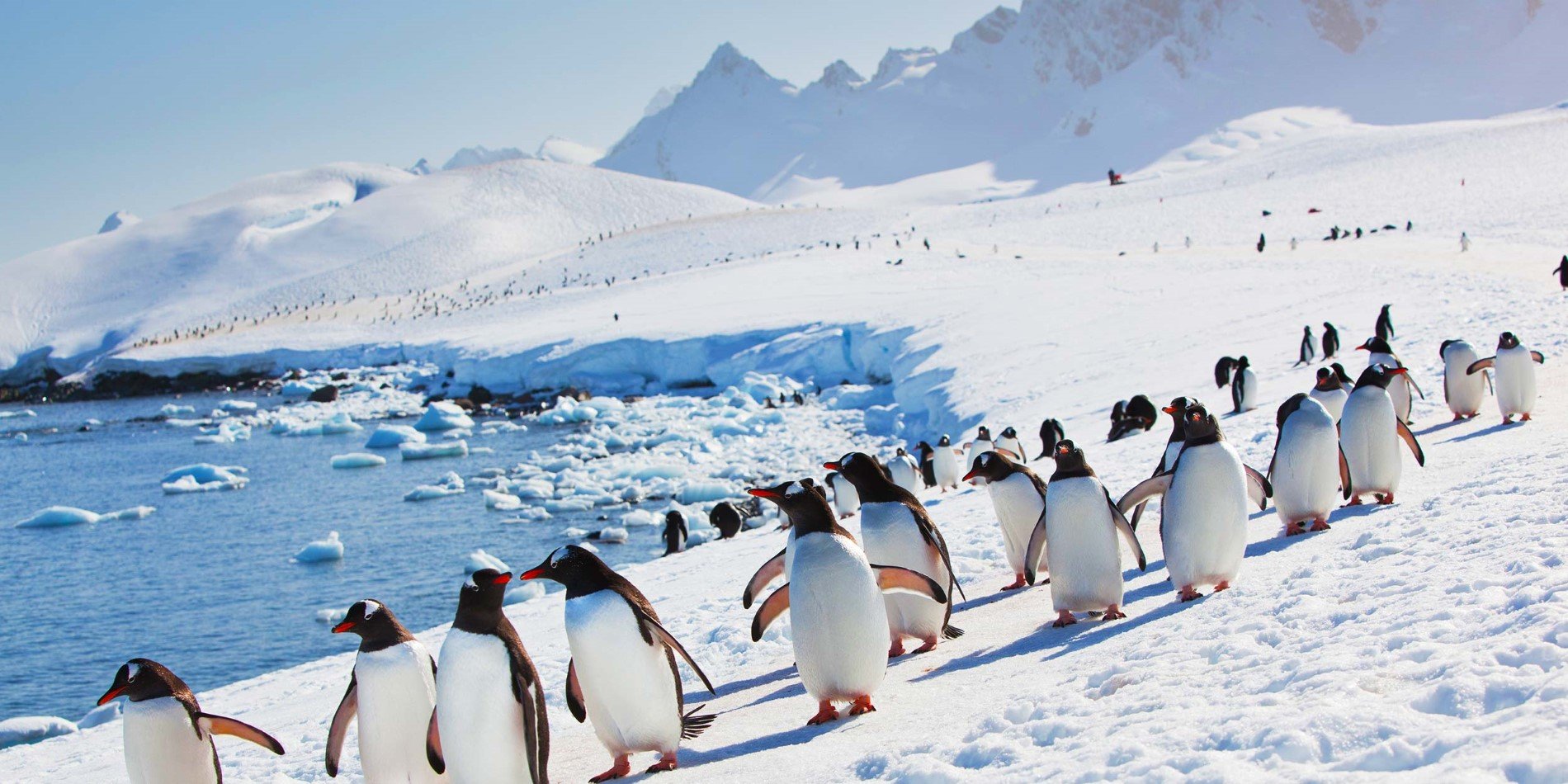
Meet the Penguins of Antarctica
Penguins are one of the first species that come to mind when one thinks of Antarctica. However, of the 17 penguin species in the world, only seven can actually be found on the Great White Continent.
The Seven Penguin Species of Antarctica
Of the seven penguin species found in Antarctica, only four spend their entire lives on the continent; the remaining three species only spend part of the year on the ice. Below, a bit more detail:
1. Adélie Penguins
Adélie penguins live on Antarctica and a few of the surrounding islands all year long, though they are much easier to spot from spring to fall—during winter, they spend most of their time in the water along the coast.
Adélies eat mostly small sea creatures like krill, but have been known to hunt fish and the occasional squid, as well. Male and female Adélie penguins are almost impossible to tell apart, and their lifestyle offers few clues—they're particularly egalitarian, with both parents equally taking care of their offspring.
2. Emperor Penguins
Emperor penguins are the largest and boldest—and most well-dressed—of all penguin species. They're impressively huge, reaching heights around 4 feet and weighing up to 100 pounds! They also have the most picturesque markings—in addition to the expected penguin tuxedo, they also have bright yellow and orange plumage along their heads, necks, and chests.
These penguin behemoths use community to get through the Antarctic cold. They huddle together for warmth and take shifts standing on the outside of the huddle. This way, everyone has a fair chance to be at the warmest spot deep inside.
The most interesting thing about emperor penguins, however, is their breeding habits. They breed entirely on sea ice, and most of them never actually set foot on land.
The Emperor Penguin colonies are located in the south of Antarctica in areas that Hurtigruten do not travel
3. Chinstrap Penguins
If you imagine the markings on these penguins' heads as a teeny tiny helmet, you'll understand their name. Chinstrap penguins have a little band of black feathers that run from the black markings on top of their head, through the white underside of their chin and back up—exactly like the chinstrap of a bike helmet.
Their breeding practices could be straight from a penguin soap opera. Male chinstraps race to find the very best nests, then wait for their mates to arrive. If a male can't find a nest to his liking, he may try to force couples who have settled in out of their nests. Once he does have a nest, he'll give his mate five days to show up, before moving on. If his original mate catches him with another lady however, the female penguins will fight over his affections.
This article continues after the photo gallery and the video.
4. Gentoo Penguins
Gentoos are the speedsters of the penguin world. Although they're not strong runners, they can take off in the water: When diving, they've been known to reach speeds up to 22 miles per hour! They spend the majority of their day hunting krill, squid, and fish.
The third-largest penguin species, gentoos weigh around 12 pounds.
5. King Penguins
King penguins look similarly to emperor penguins, with colorful plumage accentuating their black-and-white pattern. It's worth noting, however, that the black of the king penguin is not as dark as other penguin species, and could possibly be described as dark gray.
King penguins live further north, and they only spend part of the year on Antarctica. They breed in large colonies, but may leave the chicks unattended during winter. It is during this time that many king penguins can be found traveling to the northern part of the Antarctic Peninsula.
6. Macaroni Penguins
Small and stout, the most recognizable feature on a macaroni penguin is its bright, spiky, orange eyebrows, called crests. These markings are actually fairly common in the penguin world, but they're usually a light yellow color.
There are plenty of macaroni penguins around—in fact, there is reason to believe they are the most abundant penguin species. The don't live on Antarctica the full year, but reach some of the islands surrounding the continent.
7. Rockhopper Penguins
In addition to bright yellow eyebrow markings, similar to macaroni penguins, rockhoppers have spiky crests that extend all the way onto the crowns of their heads.
They get their names from their distinct method of moving around: As the name suggests, they like to hop from stone to stone in the rockier parts of the sub-Antarctic islands.






